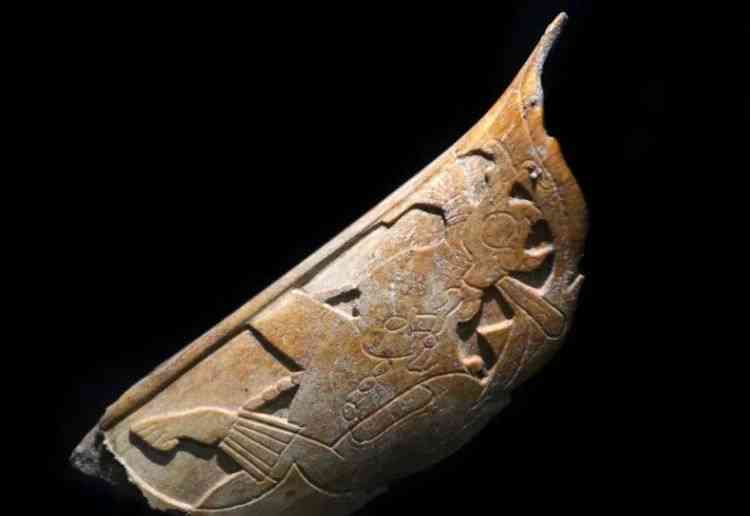Mayan nose ornament made from human bone found at Palenque

Nose ring made from human bone found by archaeologists at Palenque. Archaeologists from the National Institute of Anthropology and History (INAH) have uncovered a nose ornament made from human bone during excavations at the Maya city of Palenque.
Palenque, also known as Lakamha in the Itza Language (meaning “Flat-Place-River”), is located near the Usumacinta River in the Mexican state of Chiapas.
Excavations of House C, part of a palace complex built by Pakal the Great, has led to the discovery of a ritual deposit containing a nose ring made from human bone. The deposit is likely an offering to commemorate the building’s completion between AD 600 and 850 during the Late Classic period.

The nose ring is made with part of a human distal tibia which forms the bony structure of the ankle joint, and has an engraved scene used to personify K’awiil, the Mayan god associated with lightning, serpents, fertility, and maize. The Maya often depicted Kʼawiil holding the promise of “Innumerable Generations” who was part of the Maya rulers ritual inauguration and accession to the throne.
On the left half of the ring is the engraved profile of a man wearing a headdress with the head of a bird. On the left arm it shows the Mayan glyph ak’ab’ , “darkness” or “night”.
The deposit was located in a stucco floor where the researchers found a pit with a filling of clay soil and the remains of charcoal. While sifting the filling contents, the team also found animal remains, obsidian blades, fragments of a bone awl, and the human bone nose ring.
According to a press announcement by INAH: “The earth matrix was very dark with a high amount of charcoal and intermingled with seeds, fish bones, turtles, small mammals, obsidian blades, some large pieces of charcoal and, among them, a bone nasal ornament.”
